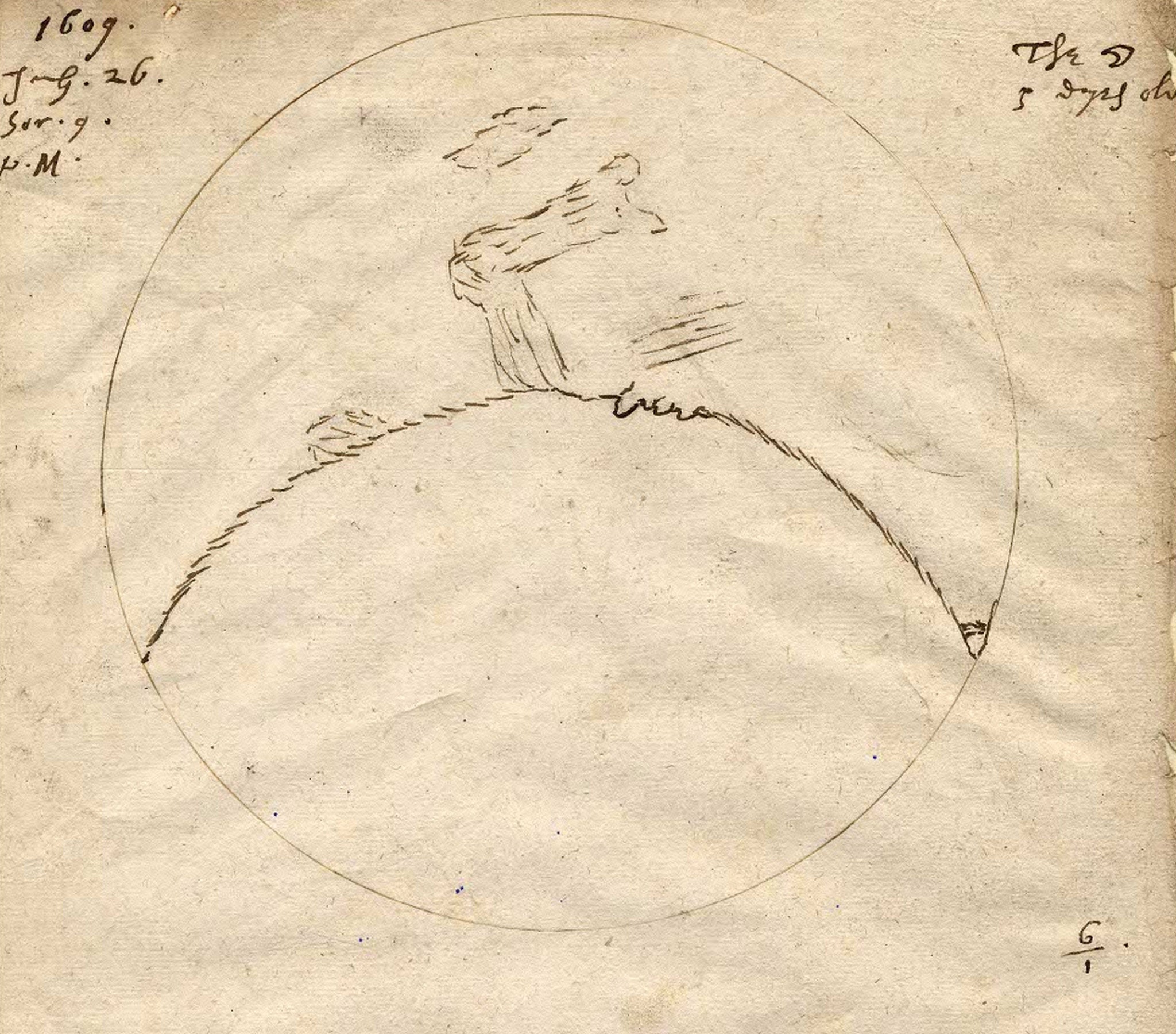Rhodri Marsden's Interesting Objects: Thomas Harriot's Moon Drawing
Harriot's sketch was the first of the moon through a telescope, beating Galileo by about four months

This weekend in 1609, London mathematician Thomas Harriot peered through his new telescope and decided to draw what he saw. The resulting sketch was the first of the moon through a telescope, beating Galileo by about four months. But while Galileo went on about it and got the plaudits, the self-effacing Harriot kept schtum.
The telescope (or "Dutch trunke") that Harriot used that evening boasted 6x-magnification, enabling him to sketch a few lines and some light shading to indicate the area now known as the Mare Crisium. Over the next few months he continued his lunar observations. "In the full," he wrote, "she appears like a tarte that my cooke made me the last week. Here a vaine of bright stuffe, and there of darke, and so confusedlie al over."
Harriot had friends in high places, including two – Sir Walter Raleigh and the Earl of Northumberland – who were holed up in the Tower of London at the time of his first drawing. So it's perhaps understandable that he didn't want to draw undue attention to himself or his work. But by 1613 he had produced two annotated maps of the moon's surface – with recognisable features such as craters in what we now know to be basically their correct relative positions – which he also failed to publish. One friend berated him for his "great reservednesse" which "hath robd you of these glories".
Harriot's only publication during his lifetime was "A Brief And True Report Of The New Found Land of Virginia", written during a colonial expedition to North America, in which he provides one of the first written descriptions of the potato.
While on that expedition he also invented the greater-than (>) and less-than (<) signs which, again, weren't recognised until after his death. The significance of his first moon drawing, made 406 years ago tomorrow, wasn't fully appreciated until the 20th century.
Join our commenting forum
Join thought-provoking conversations, follow other Independent readers and see their replies
Comments
Bookmark popover
Removed from bookmarks